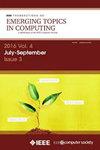Real-Time Access Control for Background and Co-Occurrence Image Privacy Protection
IF 5.4
2区 计算机科学
Q1 COMPUTER SCIENCE, INFORMATION SYSTEMS
IEEE Transactions on Emerging Topics in Computing
Pub Date : 2025-03-28
DOI:10.1109/TETC.2025.3572396
引用次数: 0
Abstract
In today’s digital age, the proliferation of social networks and advanced camera technology has led to countless images being shared on online social platforms daily, potentially resulting in significant breaches of personal privacy. In recent years, many methods have been proposed to protect image privacy, allowing users to be notified of potential privacy leaks before publishing their photos. However, most existing research primarily addresses the privacy protection of image owners or co-owners, while neglecting the privacy of people who appear in the background of others’ images or who are co-occurring with others in the same image. In this paper, we propose a system capable of conducting real-time access control for protecting privacy of every individual appearing in a photo, as well as the privacy of people who co-occur in the same image. Specifically, we first detect all the faces in the image, then use a facial recognition algorithm to identify the corresponding users’ privacy policies, and finally determine whether the image violates any user’s privacy policy. In order to provide real-time access control, we have designed a facial attribute index tree to speed up the process of user identification. The experimental results show that compared with the method without our proposed index tree, our approach improves the time efficiency by almost two orders of magnitude while maintaining the accuracy of more than 97%.背景和共现图像隐私保护的实时访问控制
在当今的数字时代,社交网络的激增和先进的摄像技术导致无数的图像每天在在线社交平台上被分享,这可能导致严重侵犯个人隐私。近年来,人们提出了许多保护图像隐私的方法,允许用户在发布照片之前收到潜在隐私泄露的通知。然而,现有的大多数研究主要针对图像所有者或共同所有者的隐私保护,而忽略了出现在他人图像背景中的人或与他人共同出现在同一图像中的人的隐私。在本文中,我们提出了一个能够进行实时访问控制的系统,以保护照片中出现的每个人的隐私,以及同一图像中共同出现的人的隐私。具体来说,我们首先检测图像中的所有人脸,然后使用人脸识别算法识别相应的用户隐私政策,最后确定图像是否违反了任何用户的隐私政策。为了提供实时的访问控制,我们设计了人脸属性索引树来加快用户识别的过程。实验结果表明,与没有索引树的方法相比,该方法在保持97%以上的准确率的同时,将时间效率提高了近两个数量级。
本文章由计算机程序翻译,如有差异,请以英文原文为准。
求助全文
约1分钟内获得全文
求助全文
来源期刊

IEEE Transactions on Emerging Topics in Computing
Computer Science-Computer Science (miscellaneous)
CiteScore
12.10
自引率
5.10%
发文量
113
期刊介绍:
IEEE Transactions on Emerging Topics in Computing publishes papers on emerging aspects of computer science, computing technology, and computing applications not currently covered by other IEEE Computer Society Transactions. Some examples of emerging topics in computing include: IT for Green, Synthetic and organic computing structures and systems, Advanced analytics, Social/occupational computing, Location-based/client computer systems, Morphic computer design, Electronic game systems, & Health-care IT.
 求助内容:
求助内容: 应助结果提醒方式:
应助结果提醒方式:


